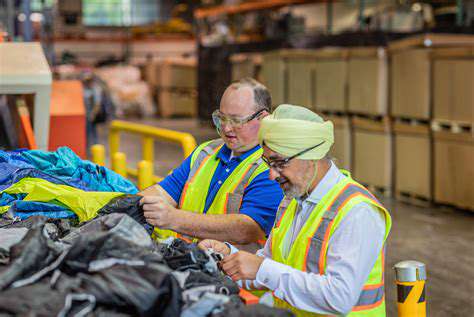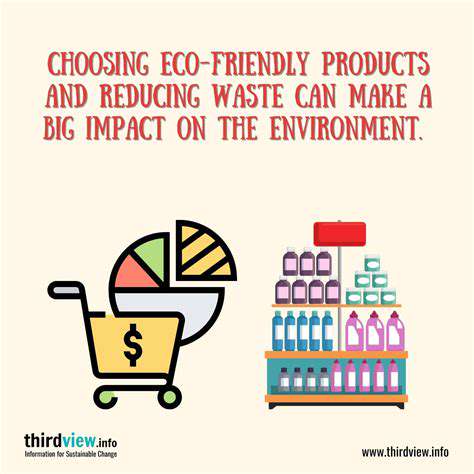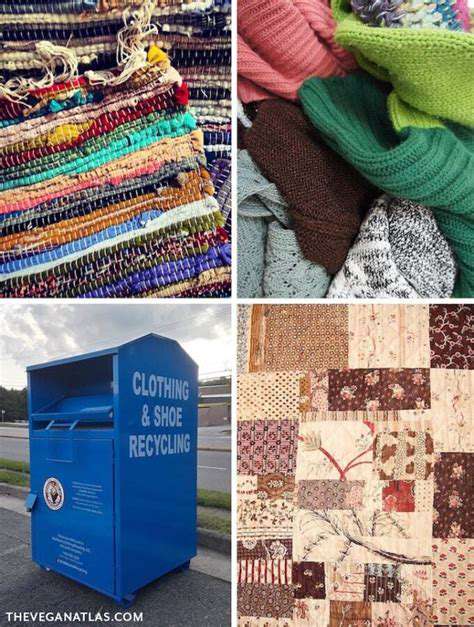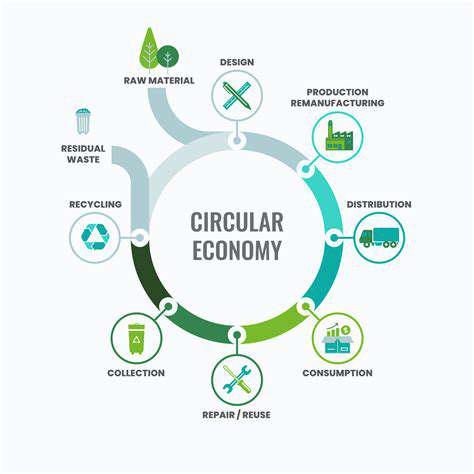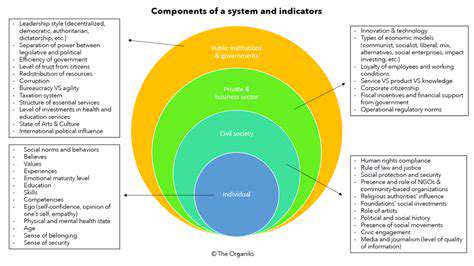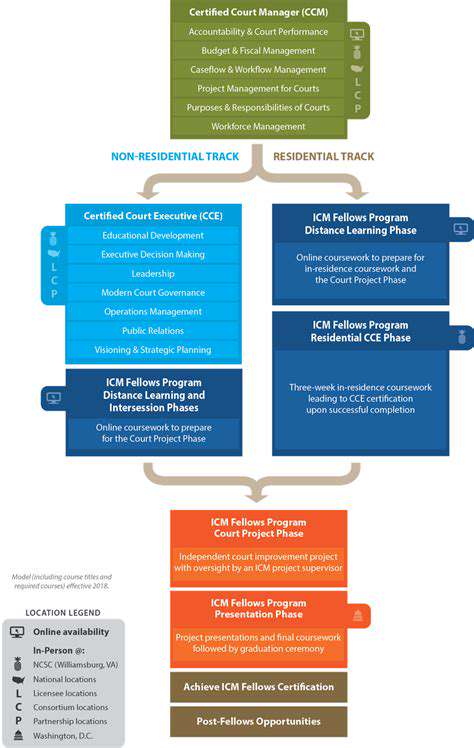Deconstructing Fast Fashion's Linear Model
From Runway to Landfill: The Short-Lived Lifespan of Fast Fashion
The Allure and Illusion of Fast Fashion
Fast fashion's endless cycle of trends and affordable garments has captivated global consumers, offering instant gratification through rapidly changing styles. This accessibility comes at a steep price, however, as the industry fosters a throwaway culture where clothes are discarded after minimal use. The convenience of constantly updated collections encourages impulse buying, masking the environmental and ethical consequences behind production.
While fast fashion satisfies the desire for newness at low prices, it conceals complex supply chains involving exploitative labor and environmental harm. The excitement of finding bargain-priced items often overshadows the true cost of their creation.
The Environmental Footprint of Disposable Fashion
Fast fashion's ecological impact is staggering, with toxic dye runoff contaminating waterways and textile waste clogging landfills. The industry's water consumption for cotton production alone could supply drinking water to millions annually. Synthetic fibers, which take centuries to decompose, now account for over 60% of clothing materials, creating a long-term waste crisis.
Beyond visible pollution, the demand for raw materials depletes natural resources at unsustainable rates. Cotton farming consumes vast amounts of water and pesticides, while petroleum-based fabrics contribute to fossil fuel dependence.
Ethical Concerns and Labor Practices
The true price of cheap clothing becomes apparent in overseas factories where garment workers earn less than living wages. Many face dangerous conditions in structurally unsafe buildings, working excessive hours to meet unrealistic production quotas. These systemic issues persist because brands prioritize profit over people, creating a cycle of exploitation hidden behind attractive price tags.
The Rise of Sustainable Alternatives
A growing counter-movement is challenging fast fashion's dominance through innovative solutions. Circular fashion models that emphasize garment longevity, recycling programs, and rental services are gaining traction among environmentally conscious consumers. Forward-thinking brands now use organic materials and transparent supply chains to differentiate themselves from unsustainable competitors.
Secondhand shopping has evolved from a thrifty alternative to a mainstream choice, with online platforms making pre-owned fashion more accessible than ever. These shifts indicate changing consumer priorities toward more responsible consumption.
The Consumer's Role in Shifting the Paradigm
Shopping habits directly influence industry practices, meaning every purchase casts a vote for the fashion future. Choosing quality over quantity, researching brand ethics, and embracing clothing care can significantly reduce fashion's environmental impact. Simple actions like washing clothes less frequently and repairing minor damages extend garment life exponentially.
Collective consumer pressure has already forced major brands to adopt more sustainable practices, proving that market demand can drive meaningful change in corporate behavior.
The Human Cost: Labor Exploitation in the Fast Fashion Supply Chain
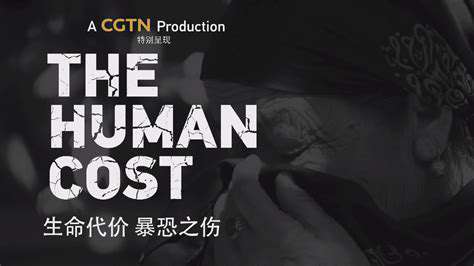
Exploitation in the Global Supply Chain
Globalized production enables brands to exploit wage disparities between nations. Many garment workers earn barely 10% of what constitutes a living wage in their countries, trapped in cycles of poverty despite working 60+ hour weeks. Complex subcontracting networks allow brands to avoid responsibility for factory conditions while benefiting from cheap labor.
The 2013 Rana Plaza collapse that killed 1,134 Bangladeshi workers exposed these systemic failures, yet many dangerous factories continue operating with minimal safety improvements.
Wage Stagnation and Inequality
While fashion executives earn millions, their workers struggle to afford basic necessities. In some producing countries, real wages have decreased by 15-20% over the past decade despite soaring corporate profits. This growing inequality creates social instability while maintaining artificially low consumer prices.
Child Labor and Forced Labor
An estimated 170 million children work in global supply chains, with many producing textiles. In Uzbekistan and Turkmenistan, government-organized forced labor still harvests cotton for international fashion brands. These practices deprive children of education while exposing them to hazardous pesticides and extreme working conditions.
Health and Safety Risks
Textile workers face respiratory diseases from fabric dust, chemical burns from dyes, and repetitive stress injuries. Less than 2% of Bangladeshi factories meet international electrical safety standards, creating constant fire risks. Many workers lack access to basic medical care despite these occupational hazards.
Impact on Communities
Exploitative factories create environmental and social crises in producing regions. Textile dye pollution has turned some Asian rivers toxic, destroying fisheries and contaminating drinking water for millions. The industry's instability also creates boom-and-bust cycles that destabilize local economies.
The Ethical Responsibility of Consumers
Informed shoppers can drive change by supporting certified ethical brands and demanding transparency. Mobile apps now enable consumers to scan clothing tags for factory information and labor conditions. Pressure from conscious buyers has already pushed some major retailers to sign binding safety agreements in producing countries.
Beyond the Trend: Reimagining the Fashion Industry
The Disposable Nature of Fast Fashion
Fast fashion's business model depends on planned obsolescence, with some garments designed to last just 10 washes. This intentional fragility creates constant demand while generating massive waste - the equivalent of one garbage truck of textiles enters landfills every second globally. The industry's breakneck speed also prevents proper quality control, resulting in hazardous chemicals remaining in clothing.
The Environmental Footprint of Fast Fashion
Fashion accounts for 10% of global carbon emissions - more than international flights and maritime shipping combined. A single cotton t-shirt requires 2,700 liters of water to produce, enough for one person's drinking needs for 900 days. Microplastic pollution from synthetic fabrics now contaminates 35% of ocean microplastics, entering the food chain through seafood.
Ethical Concerns in Fast Fashion Supply Chains
Despite corporate social responsibility pledges, most brands lack visibility beyond tier-one suppliers. Audits often fail to detect forced overtime or safety violations, with factories coaching workers before inspections. The pandemic exacerbated these issues, with brands canceling $40 billion in orders, devastating workers who had already produced the goods.
The Illusion of Affordability
Fast fashion's true cost becomes apparent when considering externalized expenses. Taxpayers ultimately bear the cost of textile waste management, environmental cleanup, and healthcare for affected workers and communities. When these hidden expenses are factored in, ethically produced clothing often proves more economical long-term.
Alternatives to Fast Fashion: Sustainable Practices
Innovations like fungal-based leather, algae dyes, and 3D knitting minimize waste while creating biodegradable materials. Rental platforms now offer designer wardrobes for special occasions, reducing the need for single-use outfits. Some brands implement take-back programs that recycle old garments into new fibers, though scaling these solutions remains challenging.
The Power of Consumer Choice
Market shifts demonstrate consumer influence - the secondhand market is projected to overtake fast fashion by 2029. Gen Z shoppers are 50% more likely to research brand ethics before purchasing compared to older generations. This generational shift forces brands to adopt more transparent and sustainable practices to remain relevant.
The Consumer's Role: Shifting Towards Conscious Choices
Understanding the Impact of Consumption
Every clothing purchase carries environmental and social consequences invisible on price tags. The average consumer buys 60% more clothing than 15 years ago but keeps items half as long, creating unprecedented waste. Recognizing this disconnect between purchase and impact is essential for changing consumption patterns.
Recognizing the Ethical Dilemmas
Social media influencers promoting haulculture encourage disposable consumption while obscuring production realities. Many brands spend more on marketing sustainability initiatives than actually implementing them - a practice called greenwashing. Consumers must look beyond surface claims to evaluate brands' full supply chain impacts.
Embracing Sustainable Alternatives
Building a sustainable wardrobe starts with wearing existing clothes longer. Extending a garment's life by just nine months reduces its carbon footprint by 30%. When purchasing new items, certifications like GOTS (Global Organic Textile Standard) help identify truly sustainable options among greenwashed products.
Taking Action for Change
Beyond individual choices, collective advocacy creates systemic change. The Fashion Revolution movement's WhoMadeMyClothes campaign has pushed over 200 brands to disclose supplier lists. Supporting legislation like the Garment Worker Protection Act helps establish industry-wide standards for fair wages and safe conditions.




